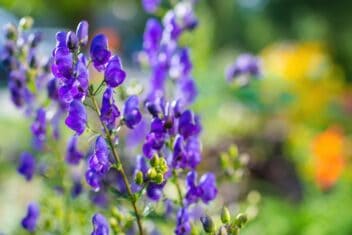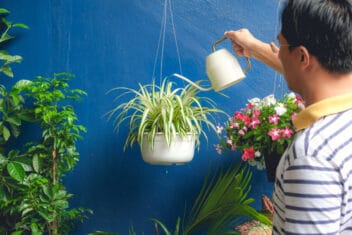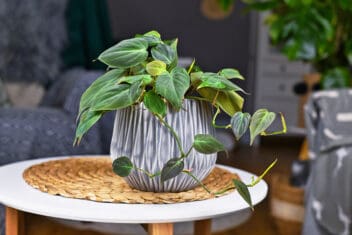If you’re looking for something unique to grow on your homestead, check out snail vine. Also known as the “corkscrew vine,” this beautifully strange flower is easy to care for and produces bright, eye-catching blossoms.
With its unique beauty, it’s the perfect thing to add some life to a fence, trellis, or wall, and the heady fragrance can be smelled from far away.
Snail vines can grow fast and produce fragrant flowers for up to eight weeks in the summer, and since it’s uncommon, it’s sure to have everyone asking about your gorgeous new garden addition.
What Is Snail Vine?
Snail vine (Cochliasanthus caracalla) is a perennial from warm South and Central America climates. Grow this deciduous plant as a perennial in USDA Hardiness Zones 9-11 or an annual in other areas.
You could also grow your snail vine outdoors during summer and move it to a protected area during the winter. Many people like to plant snail vines in containers so they can be moved when the weather changes.
It’s easy to spot a snail vine flower by its distinctive appearance. The flowers resemble snail shells, in colors that range from lavender to pink.
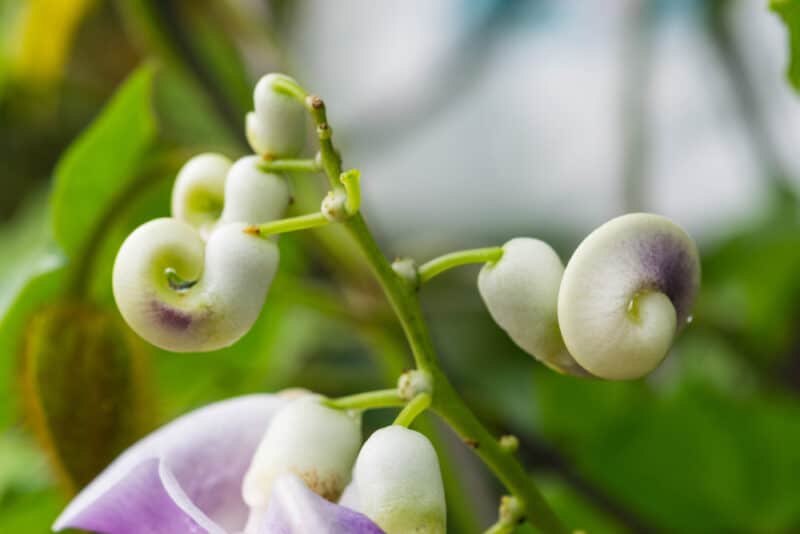
This plant grows edible beans, but most people grow it for its ornamental value. Use it in your cottage garden to cover a trellis or fence. Or let it crawl on a support outside your kitchen window so you can enjoy the heavenly fragrance even while indoors.
This vine can reach 20 long feet with enough space, but container-grown plants will stay smaller.
This vine was wildly popular during the Victorian era but fell out of favor until recently.
Planting Snail Vine From Seed
Seed is the most popular way to grow snail vines. Alternatively, it’s possible to use cuttings from another snail vine plant.
Once you have the seeds, fill a four-inch pot with potting soil.
Place the seeds into the soil and bury them about an inch deep. Water well so the soil is moist but not soggy. Keep the soil moist as the seeds grow. You might want to use a cloche or plastic cover to help retain the humidity.
Leave the pot in a warm area with bright, indirect light until it has developed a few leaves. Then, you can move the plant into a larger pot outdoors or transplant it to its permanent home. Be sure to harden the plant off before setting it outside.
Plant transplants about six inches apart.
Caring for Snail Vine

Depending on your climate, this plant can grow as a perennial or annual.
Snail vines can grow in full sun or partial sun. If you grow the vine in full sun, be cautious about extreme heat, especially in the afternoon. When the plant is exposed to high temperatures for too long, it can lead to wilting.
Wilting is when the plant starts to droop. High temperatures are one reason that this can affect your plant, but underwatering or overwatering are also potential causes.
Adjust your watering schedule when the temperatures increase.
Another reason for wilting is that the roots have outgrown the pot. This happens when you have an older plant that has not been repotted for several years. If the container is too small, it’s difficult for the plant to access nutrients and water.
Soil and Temperature
This plant can survive in a range of soil conditions but prefers slightly acidic soil that is rich and loamy. The most important thing is that the soil is well-draining.
If you plant in a container, ensure there are drainage holes to prevent excess moisture build-up, which can lead to conditions like root rot. Check the potting mix, as well, and ensure it’s well-draining.
This plant doesn’t do well when temperatures drop below 59°F. It prefers humid, warm conditions.
Water Needs
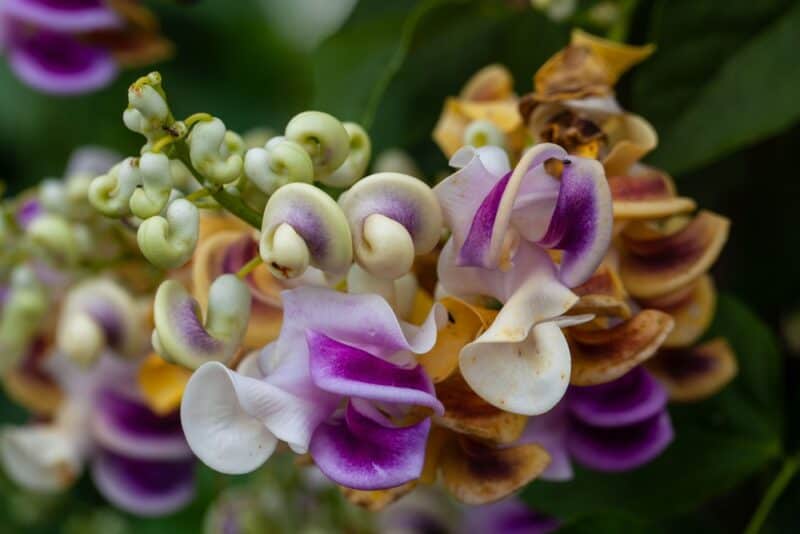
They grow best with consistent water. If the top inch of soil is dry, it’s a sign that you need to water the plant. They don’t do well in drought conditions, so keep on top of your watering routine.
Fertilizer is not vital for snail vine plants, but adding well-rotted compost or manure to the soil is a great way to increase the nutrients.
Pruning and pinching promotes new growth and prevents the vines from encroaching on other plants. Remove dead leaves and overgrown vines as quickly as possible.
Cut back the snail vine in spring, leaving the strongest vines. You can also reduce the length if the plant is becoming too exuberant.
Pests and Diseases for Snail Vine
Snail vine is a sturdy plant without many pests or diseases. The main problem is aphids which are small sap-sucking pests that cause damage to all kinds of plants.
The main symptom of aphids is stunted growth and a sticky substance on the leaves. Aphids can sometimes transmit diseases if they have previously populated an infected plant.
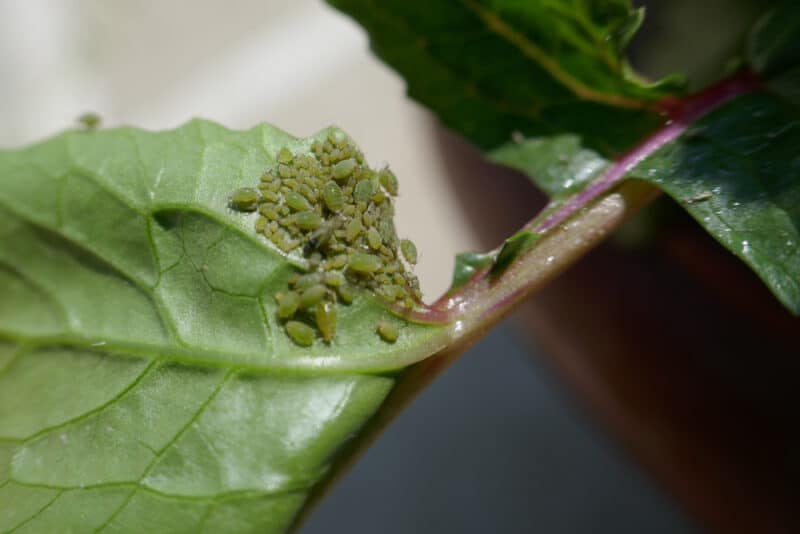
Summer and spring are the most active times of the year for aphids, so it’s essential to be extra vigilant during these months.
The treatment methods will differ based on the size of the aphid infestation. If you have a small group of aphids, you can blast them off the leaves with a stream of water, or wipe them off. For larger infestations, you apply insecticidal soap or neem oil.
Root Rot
Root rot is common on snail vines in heavy soil or containers. Overwatering can cause root rot, which shows up as leaf discoloration and wilting. When you notice root rot, act quickly.
The longer root rot develops, the harder it is to treat. Remove the plant from the pot or soil and wash away the soil.
Use garden scissors to trim away the infected roots and clean out the pot, if using. Soak the roots in a copper fungicide solution to kill any fungal pathogens. Replant the vine.
Be sure to choose a container with drain holes so there’s less risk of moisture build-up. Be extra careful not to overwater. If the root rot is severe, you might have to dispose of the plant as the damage has destroyed it beyond the point of return.
Companion Plants
Companion plants can improve the biodiversity of your homestead. A few excellent companion plants for snail vines are:
- Panicle hydrangea (Hydrangea paniculata)
- Border grass (Liriope muscari)
- Guelder-rose(Viburnum opulus)
- Geraniums (Geranium spp.)
- Verbena (Verbena spp.)
Anything with similar growing condition requirements to snail vine will work, really.

